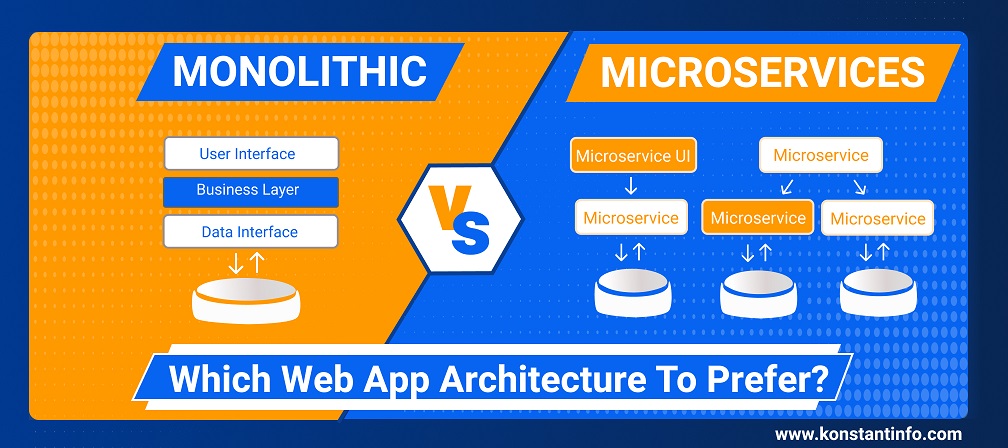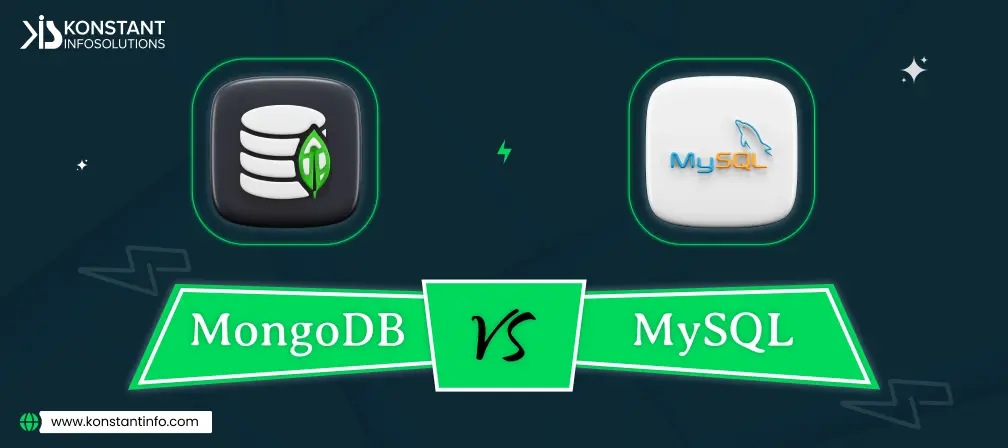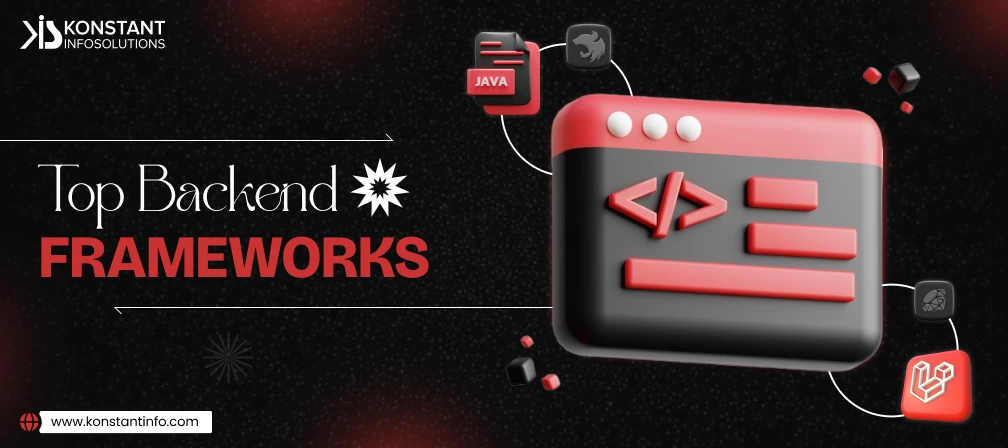Application components communicate with each other via web application architecture. It is the way a client connects to the server that makes architecture unique. There are many different ways that these two combine: A server can connect with multiple clients, or a server can connect with one single client.
Architectures foster the relationships and interactions (communication) between components such as user interfaces, transaction processing, and databases. It binds and makes all elements work together correctly.
How does System Architecture for Web Application work?
Every application consists of a front-end and a back-end. The front-end is the UI/UX part, and the back-end operates the database. Users interact with the interface (presentation layer), and the back end handles the business logic and HTTP requests. There can be various ways for a server to communicate with its client systems.
As an example: Users fill in the contact us form (interface), and the details get saved into the application database. This process completes the web application architecture.
Users -> interacts with Client Side with HTML + CSS + JavaScript -> requests server side for business logic PHP, Java, .Net -> sends request to database with MySQL, PostgreSQL
Basis Components of Web Application Architecture
Layers of Web App Architecture:
- Presentation Layer – Displays UI and makes user interaction simpler.
- Data Service Layer – Transmits data processed by Business Logic to Presentation Layer.
- Business Logic Layer – Guarantees the proper data exchange.
- Data Access Layer – Provides simplified access to data.
Which web architecture should you prefer?
The app logic distribution throughout the web application decides the type of the web application. The most common web application architectures are:
- Single-page web apps – It loads all required information when you load the page. E.g. Gmail, Facebook, Slack, Twitter
- Multi-page web apps – These are large applications where servers send solutions to reload across client browsers.
- Microservices Architecture – It lets developers create a web app with a set of small services. Developers create and deploy every component separately. It is suitable for large applications where every block works independently – Netflix, PayPal, Spotify, Uber etc.
- Monolithic Architecture – It consists of database, client-side, and server-side. The back-end and front-end tasks evolve via one codebase. Therefore, if any changes are required, then developers need to rewrite the entire application.
- Server-less architecture – Serverless architecture often refers to a platform as a service (PaaS) or function as a service (FaaS). It is preferable if you need to host a small number of functions. It is suitable for simple applications. It is a design pattern that hosts a third-party service, eliminating the need to manage software and hardware. The app bifurcates into individual functions that are invoked and scaled.
- Progressive web apps – Progressive web applications are web-based solutions designed to act like Native applications on mobile devices. It offers offline access, push notifications, installing on the home screen of the mobile device. It includes web programming languages like HTML, CSS, JavaScript and API like NFC API, Geolocation API, Bluetooth API etc.
Differences: Monolithic vs Microservices
As part of the current discussion, let’s discuss Monolithic and Micro-services in detail.
Monolithic Applications
Monolithic architecture is built as one system and is usually one codebase.
Features and Advantages
- It depends upon a single code base.
- The number of modules is variable and depends upon the complexity of the business.
- All dependencies depend on a single system with a single executable binary for deployment.
- Such applications offer less operational overheads, which avoids the additional costs that could stem from micro-services such as inter-service communication – service discovery – registration – load balancing – decentralized data management – distributed logging.
- Testing microservices is complex.
- Monolithic architecture has a better throughput performance.
- It is easier to create – test – deploy – scale.
- It has a shared database.
- Large code base increases the building load – compile – execute – test – deployment timings.
Disadvantages
- Tight coupling makes it difficult to upgrade the services.
- Upgrades require recoding the entire application to factor in the dependencies and side effects.
- Integrating more than one programming language limits the flexibility of adding in the best features.
- It complicates the adoption of third-party tools.
- This approach is limited to small applications.
- Load and turnaround time can be high for larger applications.
- The application is deployable on every update.
- It requires extensive manual testing.
- These applications are difficult to scale when different modules have conflicting resource requirements.
- Deployment is difficult.
- Monolithic applications are not reliable as a single bug can impact the entire process.
- You cannot adopt new technologies with Monolithic applications as changes in frameworks or languages affect the entire application.
- Refactoring an application becomes difficult for large enterprise applications in a monolithic architecture.
Microservices Applications
Microservices architecture is a small independent module based on business functionality. Each small micro-service is a small application with hexagonal architecture that consists of business logic along with adapters. Microservices also expose REST, RPC, message-based API and implement a web UI. It significantly impacts the cord between the application and the database. Each service has its database schema, independent of each other. In this architecture, APIs for mobile, desktop and web apps interact with the back end services via API gateway, which handles load balancing, caching, access control, monitoring and API metering.
Features and Advantages
Micro-services architecture handles larger and complex applications with multiple modules and multiple databases. It works on modular components and services. Micro-services architecture helps manage data sets, leverage cloud storage, automation and deploy solutions.
- Applications based on micro-service architecture are independently deployable.
- Each unit or module works independently.
- Microservice units reduce the possibility of technical mistakes.
- These micro-service units are capable of independent scaling, and any failure does not affect another.
- Smaller units are faster to deploy, and there are minimal chances of error if integrated.
- Smaller units are easier to understand and easier to develop.
Disadvantages
- Deploying micro-services increases the number of units, which eventually increases the management and operation cost overhead.
- It is prone to security vulnerabilities and requires managing privileged access at image, container, node, pod, and namespace levels to ensure encrypted tunnelling right from the beginning of the software development.
- Multiple modules can have complexities and corresponding management.
- It often requires provisioning IPs, resources (memory, CPU, disk), multiple programming languages and frameworks, data consistency, automation tools, handling incompatibilities across the number of processes that grow exponentially.
- It often requires provisioning for increasing documentation overhead stemming from the need to keep schemas and interface documents.
- Testing all modules requires testing each dependent service.
- Difficulty in debugging problems as it requires inspecting every service log independently.
Conclusive: Why everyone prefers Microservices Architecture for Web Application?
We have discussed six different types of service architectures for web app development here. We prefer Micro-services as it is scalable with a rate of 22.5%. It brings in the idea to split the application into small interconnected services instead of building a single monolithic application. But this approach is at odds with the enterprise-wide data model, and also, it often results in duplication of some data. This architecture is widely accepted because having a database schema per service ensures loose coupling. Each service has its database. For details on how we implement it, contact us here!
About Author
Neeti Kotia is a technology journalist who seeks to analyze the advancements and developments in technology that affect our everyday lives. Her articles primarily focus upon the business, social, cultural, and entertainment side of the technology sector.



